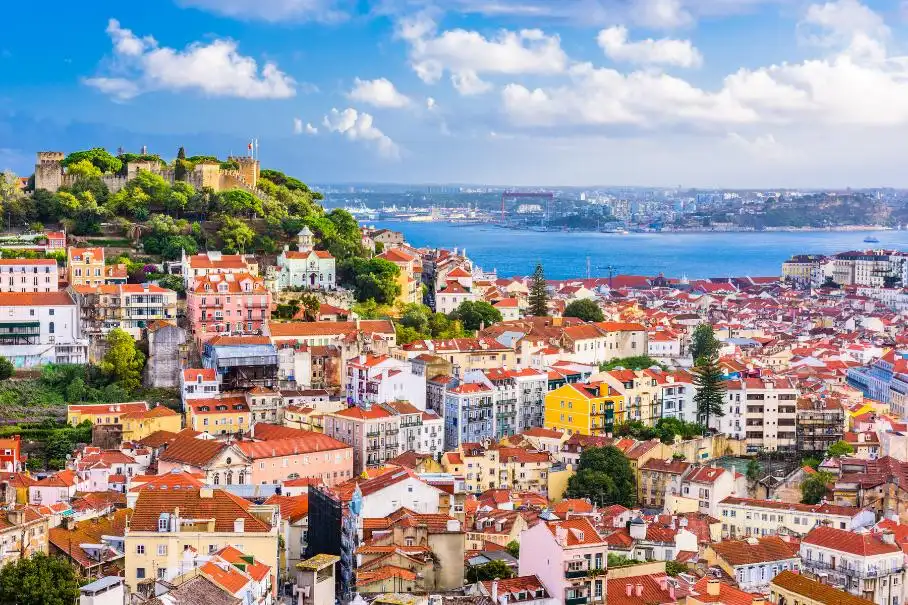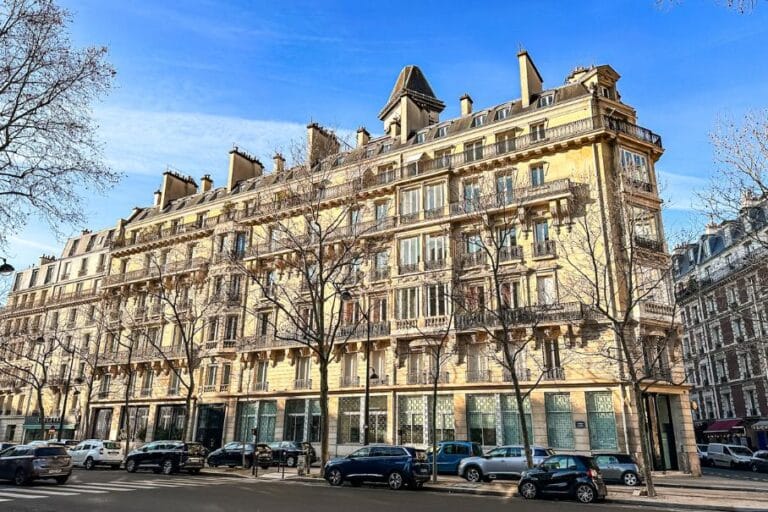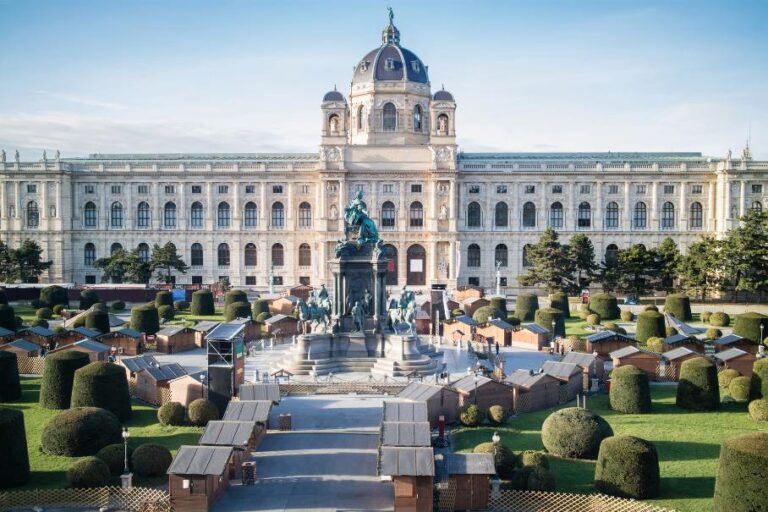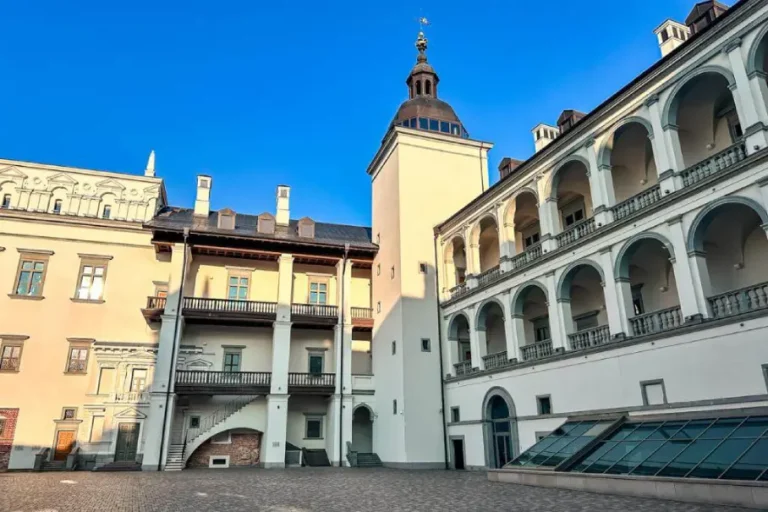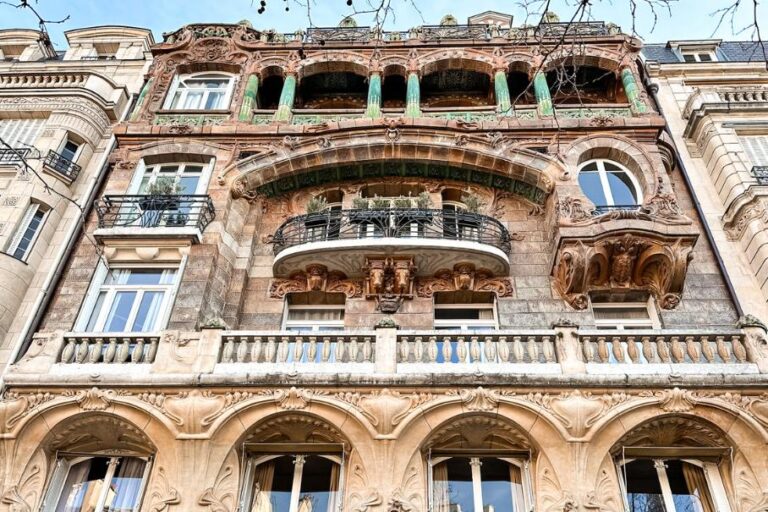3 Days in Lisbon: Epic City Break for Culture Buffs
I’m not sure why it took me so long to get to Lisbon, but once I did, it was love at first sight. I tend to say that about many cities, but there is a good reason for that. Like many of my favourite cities, Lisbon has incredible cultural attractions, gorgeous architecture and an abundance of culinary delights. If you’re a cultural traveller who loves things like that too, you’ll love a Lisbon city break.
For me, Lisbon’s charm lies in its perfect blend of history, culture and breathtaking scenery. It’s a great place with UNESCO World Heritage Sites, Gothic architecture, and plenty of bars and restaurants where you can indulge in Portuguese food. I’ve put together this 3 days in Lisbon itinerary that will give you some of the top things to do in this vibrant city. All you have to do is get here.
Why you need a Lisbon city break
Lisbon’s history spans back to the Middle Ages. Moorish architecture and centuries of maritime exploration have left a mark on the city. Today, you can immerse yourself in all that history and more. Portuguese ships sailed the world from Lisbon’s harbour during the 15th and 16th centuries. It was known as the Age of Discovery, and these ships brought vast wealth and cultural fusion to the city. Today, Lisbon’s historic center and the Belém district are home to stunning examples of Manueline design, including the remarkable Jeronimos Monastery.
Why visit Lisbon? For starters, it’s a very colourful city with a great vibe. I especially loved the iconic black-and-white mosaic sidewalks, known as calçada portuguesa. Crafted from carefully placed fragments of limestone (white) and basalt (black), they form intricate patterns beneath your feet. These designs often feature geometric shapes, waves, or symbolic motifs such as compass roses and ship references, reflecting Portugal’s deep maritime heritage.
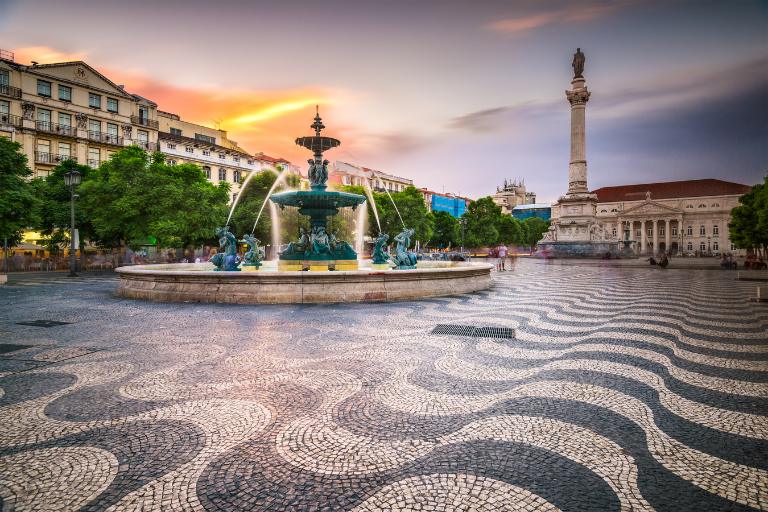
Lisbon was made for cultural adventures. It’s a city where you can explore royal palaces like Palácio Nacional da Ajuda and unwind in trendy areas like the LX Factory. Admire panoramic views from iconic miradouros (viewpoints) like Miradouro de Santa Luzia and Miradouro da Graça, then treat yourself to a decadent pastel de nata. Plus, year-round mild weather, excellent public transportation, and a welcoming atmosphere make a city break in Lisbon a must-do for anyone coming to Europe.
How to spend 3 days in Lisbon
Below is an itinerary for a 3-day Lisbon city break adventure, perfect for first-time visitors. I’ve tried to include must-see tourist attractions, great places to eat, and easy tips on navigating the city’s famously steep hills.
Day 1 of your Lisbon city break
Kick off the first day of your Lisbon city break by wandering through the oldest part of the city. Focus on the Alfama district with labyrinthine alleys, a Moorish castle and lovely viewpoints over the Tagus River.
- Explore Alfama: Alfama is Lisbon’s oldest and most atmospheric neighbourhood, famous for its narrow streets that survived the 1755 earthquake. Wander the cobblestone lanes, spotting hidden courtyards and colourful tilework.
- Castelo de São Jorge: The São Jorge Castle dates back to Moorish times, and it’s perched on a hill offering some of the best views of the city’s rooftops. Explore ancient ramparts, peer into restored towers, and learn about Lisbon’s medieval history in the on-site museum.
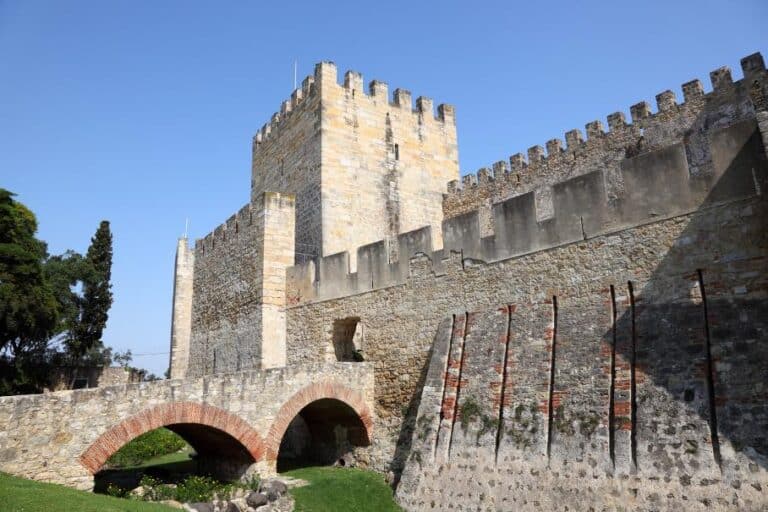
- Lisbon Cathedral (Sé de Lisboa): This is the oldest church in Lisbon. It has origins in the 12th century and showcases Romanesque and Baroque elements. Step inside to marvel at the rose window and vaulted ceilings.
- Miradouro das Portas do Sol: A short walk away is the Miradouro das Portas do Sol, which has a postcard-perfect panoramic lookout of Alfama and the Tagus River.
- São Vicente de Fora: The São Vicente de Fora monastery exemplifies austere 16th-century architecture. Don’t miss the water cisterns from the original 12th-century Medieval monastery that stood here before. Here, you’ll find azulejo panels depicting historical scenes.
- National Pantheon: The National Pantheon (Santa Engrácia Church) is part of the monastery. Here, you’ll find tombs of prominent Portuguese figures entombed in eternal rest. Climb the Pantheon’s dome for sweeping city views.
Lunch and afternoon
- Refuel on classic Portuguese dishes at a hidden gem like Taberna da Rua das Flores.
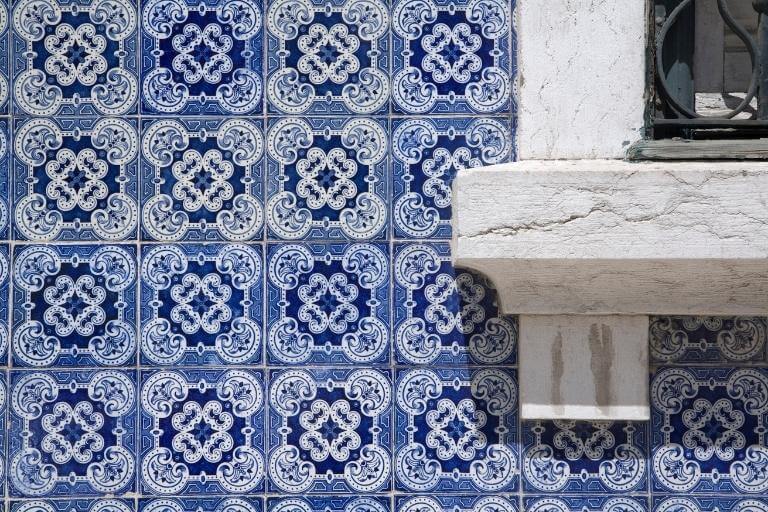
- Head to the Museu Nacional do Azulejo (National Tile Museum) to appreciate Portugal’s iconic azulejos (hand-painted tiles) integral to the country’s artistic identity. Explore displays tracing tile-making history from the Middle Ages to modern times. The museum is in a former convent, so don’t skip the stunning church interior and cloister.
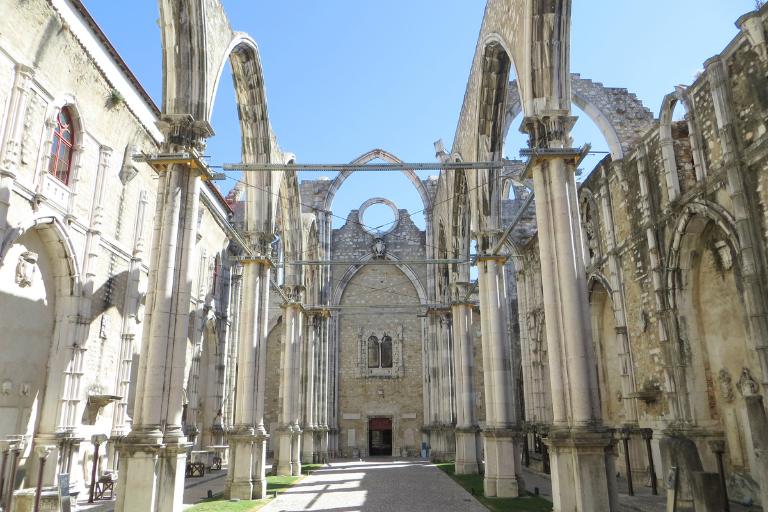
- Carmo Convent Ruins: Stop by the ruins of a church damaged in the 1755 earthquake that reshaped the city. The roofless nave and towering arches are what’s left of the once grand Gothic church. The site also houses a small archaeological museum with medieval tombs, Roman artifacts, and even Peruvian mummies. It’s near the Santa Justa Lift and offers a peaceful escape from Lisbon’s bustle.
Evening in Alfama with Fado
- Alfama is the cradle of fado, Lisbon’s soulful folk music that speaks of longing and nostalgia. Book a table at a traditional fado house like Clube de Fado or Tasca do Chico. Savour seafood and wine as local singers and guitarists fill the night with haunting melodies.
Day 2 of your Lisbon city break
On the second day of your Lisbon city break, explore Portugal’s maritime heritage in Belém, home to several UNESCO World Heritage Sites and Lisbon’s most iconic monuments, including the iconic Balem tower.
- Jerónimos Monastery: A UNESCO World Heritage Site and the finest example of Manueline architecture, Jerónimos Monastery is a masterpiece that symbolizes Portugal’s Age of Discovery. It also houses the tomb of the legendary explorer Vasco da Gama. Make sure to check out the intricate cloisters, ornate arches and Gothic-inspired carvings that fuse maritime symbols with religious iconography.
PRO TIP: Get the Hop-on Hop-off 48-Hour Bus and Boat Tour Ticket with discounts for attractions and see the best of Lisbon
- Torre de Belém Tower and Padrão dos Descobrimentos: Both iconic structures celebrate Portugal’s golden era of exploration. The Belém Tower, also UNESCO-listed, once guarded Lisbon’s harbour, while the Padrão dos Descobrimentos commemorates navigators like Henry the Navigator and Ferdinand Magellan. Climb to the top of the tower for a panoramic view of the Tagus River and Lisbon’s waterfront. At the monument, ride the elevator up to the viewing platform for a unique perspective on Belém.
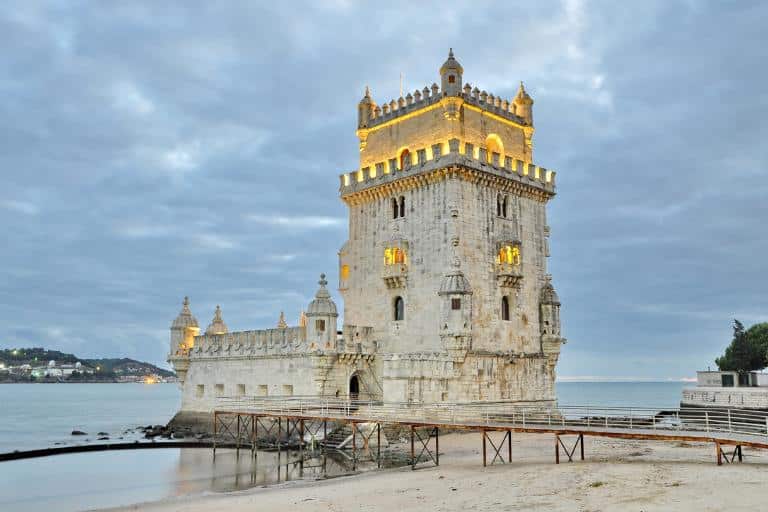
- Pastéis de Belém: This renowned bakery is the birthplace of the pastel de nata, arguably Portugal’s most famous treat. Brace for a queue, but the reward is a freshly baked, still-warm custard tart sprinkled with cinnamon and sugar. Try enjoying it with an espresso for the full Portuguese experience.
- Lunch by the River in Almada: Head to Ponto Final for a relaxed riverside meal featuring fresh seafood. Soak in the views of the 25 de Abril Bridge, reminiscent of San Francisco’s Golden Gate.
Afternoon
- MAAT or National Coach Museum: The MAAT (Museum of Art, Architecture and Technology) offers cutting-edge exhibits and striking modern design. If you’re into contemporary art, MAAT’s futuristic building and rotating exhibitions will wow you. The National Coach Museum holds one of the world’s largest collections of ornate royal carriages. The gilded coaches once used by Portuguese royalty offer a glimpse of aristocratic grandeur.
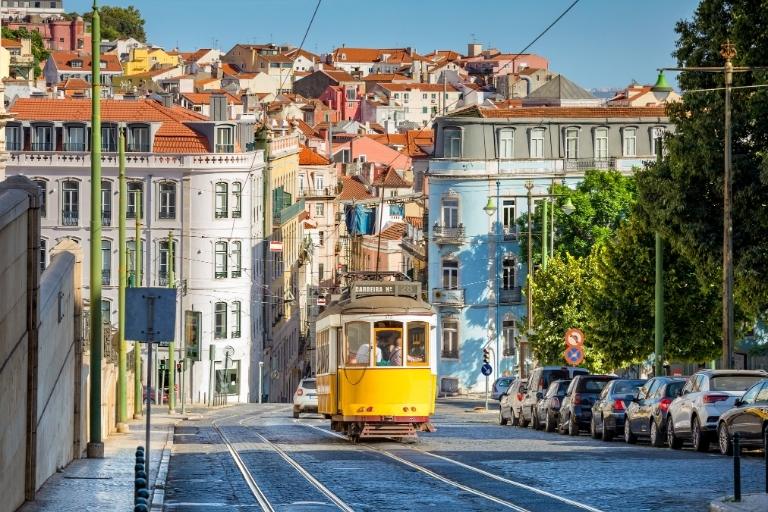
- Tram 28 Ride: This vintage tram is a great way to navigate Lisbon’s historic center, winding through Bairro Alto, Graça and beyond. Board at its starting point for a scenic ride past Lisbon’s top attractions, capturing the charm around you. Go early or late to avoid peak-time crowds.
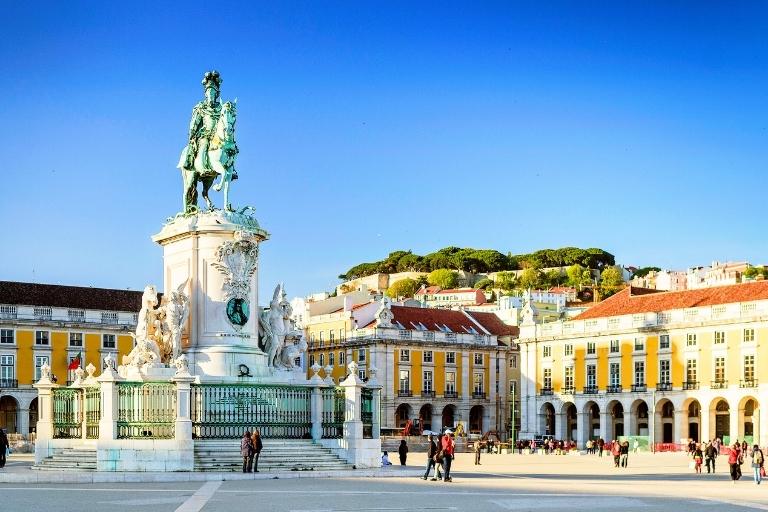
- Praça do Comércio and Arco da Rua Augusta: Lisbon’s most iconic commerce square, lined with yellow Pombaline-style buildings, is a must-visit during your Lisbon city break. Thanks to its position overlooking the Tagus River, it was the city’s main gateway for merchants and explorers. Admire the elegant architecture and the impressive statue of King José I on horseback, or climb to the top of the triumphal arch Arco da Rua Augusta for a panoramic view of the Baixa district, the Tagus River and the historic center.
PRO TIP: Stop by in the late afternoon after exploring Alfama and the historic sites. This way, you can catch the golden hour for amazing photos before heading to dinner or Bairro Alto for the evening.
Evening in Bairro Alto
- Known for its bustling nightlife, Bairro Alto transforms after dark, with restaurants and bars lining every corner. Arrive before sunset and visit Miradouro de Santa Catarina or ascend the Santa Justa Lift (elevador de Santa Justa) for breathtaking cityscapes. Then, wander the alleys to find lively live music venues and tuck into traditional dishes or international bites.
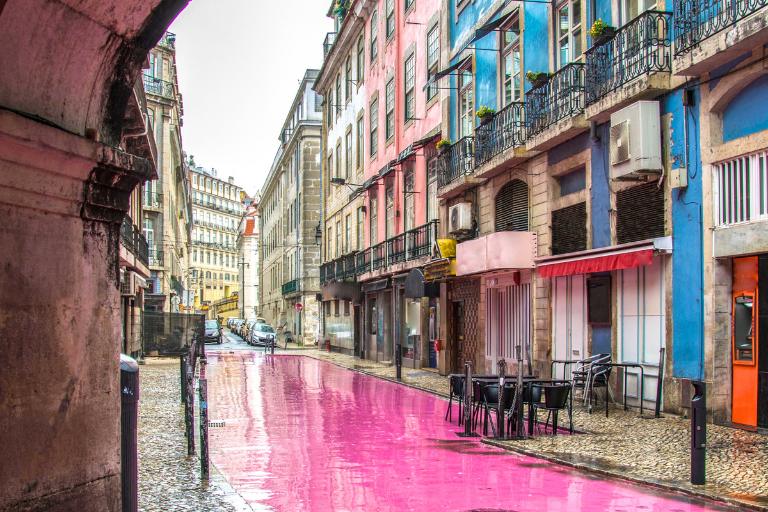
- Pink Street (Rua Nova do Carvalho): After dinner or drinks in Bairro Alto, head downhill or take a quick taxi to Cais do Sodré, home to Lisbon’s famous Pink Street. This once-seedy district has become a trendy nightlife hub where locals and tourists head for a late-night cocktail. We had a great time here and might have stayed a bit longer than intended, which is easy to do.
Day 3 of your Lisbon city break
On the final day of your 3 day Lisbon itinerary, explore Lisbon’s art scene. As the home of Portuguese royalty, Lisbon is the perfect place to explore museums and other cultural treasures.
- Calouste Gulbenkian Museum: Immerse yourself in one of Europe’s finest private art collections. The museum houses a world-class collection of European, Middle Eastern and Asian art, set amidst tranquil gardens that offer a peaceful escape in central Lisbon.
- Palácio Nacional da Ajuda: Venture to this neoclassical royal palace filled with lavish rooms and exquisite decor. Ajuda Palace offers a grand look at aristocratic life, including exquisite tapestries and gilded furniture. Be sure to take in the spiral staircases and ornate halls that showcase Portugal’s regal past.
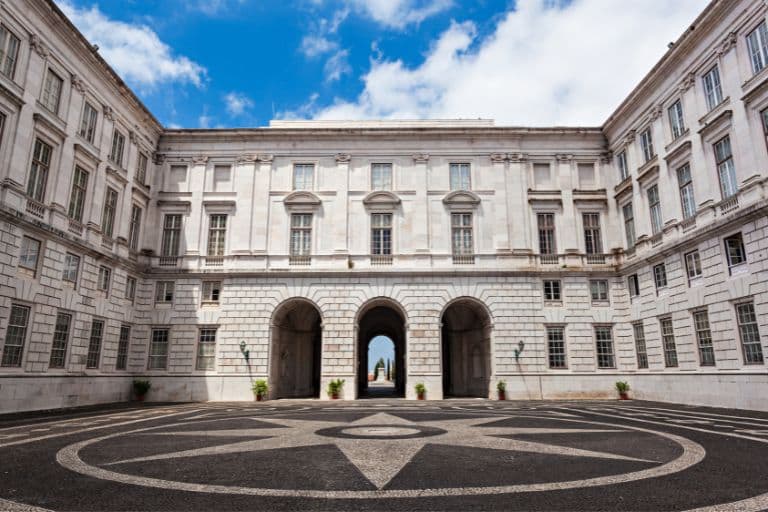
- Lunch at Cervejaria Ramiro: A good place to taste Lisbon’s seafood legacy, from succulent shrimp to massive tiger prawns. Prepare for lines (it’s that famous!), but the wait is part of the experience. Order the house specialty “prego” (steak sandwich) to finish your meal on a high note.
- Berardo Collection Museum: The Berardo Collection Museum is a haven for modern art featuring modern artworks by Picasso, Dalí, Warhol and many others. It’s one of the top museums in Lisbon and for a good reason.
- Livraria Bertrand: Stop by Livraria Bertrand in the Chiado area, the world’s oldest operating bookstore, open since 1732. Here, you can pick up Portuguese literature or simply enjoy the cozy reading nooks.
Evening at LX Factory
- Housed in a former industrial complex, LX Factory has become a creative hub brimming with street art, boutiques and cafés. Stroll around, admiring the murals and quirky shops. Treat yourself to dinner at Rio Maravilha or another trendy eatery, and gaze at the dramatic 25 de Abril Bridge illuminating the night sky.
Things to eat in Lisbon
Lisbon’s culinary scene is as varied as its cultural heritage. From fresh seafood to hearty soups, you’ll never run out of flavours to try. You can explore the city’s many restaurants and if you have time, check out the Time Out Market. This vibrant food hall and cultural hub in the historic Mercado da Ribeira near Cais do Sodré.
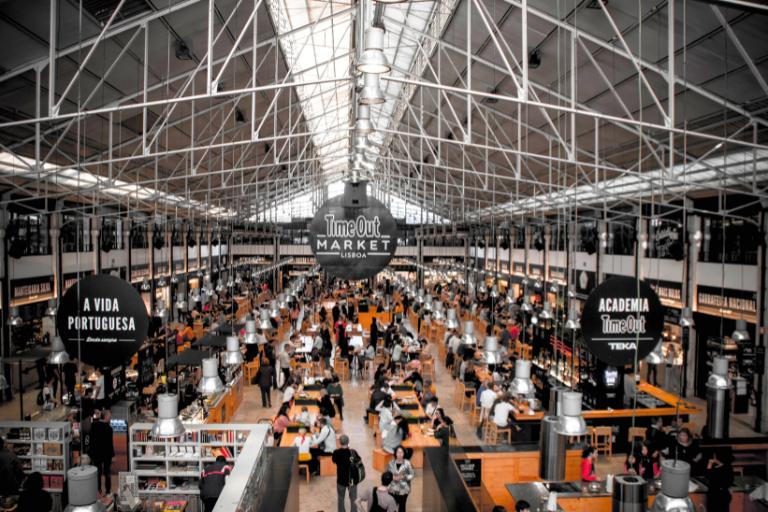
Opened in 2014, it brings together some of the city’s best chefs, restaurants and local delicacies under one roof. You can find everything from Michelin-starred bites to traditional Portuguese dishes like bacalhau à brás (salt cod scramble) and pastéis de nata (custard tarts). Beyond food, the market also features cocktail bars, live music and art events.
Traditional dishes
- Pastel de Nata: A creamy custard tart in a flaky pastry shell, best enjoyed warm with cinnamon and icing sugar.
- Bacalhau: Salted cod prepared in countless ways—try Bacalhau à Brás (shredded cod with onions, eggs, and potatoes).
- Sardinhas Assadas: Grilled sardines are especially popular during local festivals.
- Caldo Verde: A comforting soup made with kale, potatoes and chouriço.
Food tours
One of the best ways to experience local culture is through food. When visiting a new destination, one of the best ways to immerse yourself in the local flavours is through food. I recommend doing at least one food tour during your 3 days in Lisbon. Here are some tours to consider:
- Discover the flavours of Lisbon on a guided food tour through Baixa, Chiado and Cais do Sodré. Sample nine bites with three drinks at beloved eateries while delving into the city’s culinary traditions. Book your spot today
- Learn to bake your very own Pastel de Nata from scratch in a hands-on pastry class with a professional chef. Taste your fresh-made Pastel de Nata while you savour local drinks. Book your spot today
- Explore the flavours of Portuguese cuisine on a guided foodie walking tour of Lisbon. With your culinary guide, you’ll sample the finest food and wine with 15 tastings, and get insider tips about the city. Treat yourself today
Practical tips for your Lisbon city break
Lisbon is incredibly welcoming and easy to navigate, but there are a few things every visitor should know before arriving. Here are a few essential travel tips, including how to get to Lisbon, the best ways to get around, and where to stay for an unforgettable visit.
How to get to Lisbon
By air
Lisbon’s main international gateway is the Humberto Delgado Airport, previously known as the Lisbon Portela Airport (LIS), just 7 km (4.3 miles) from the city centre. It offers direct flights to major European cities and long-haul destinations, making it one of the busiest airports in Southern Europe.
The easiest way to reach the city from the Lisbon airport is by metro (Red Line), which takes about 20 minutes to central Lisbon. Alternatively, taxis, ride-sharing services (like Uber and Bolt), and Aerobus shuttle services are available.
By train
Lisbon has two major train stations: Santa Apolónia (near Alfama) and Oriente (near the Parque das Nações district). High-speed trains connect Lisbon to cities like Porto (2.5 hours), Coimbra (1.5 hours) and Faro (3 hours), making train travel a convenient option. If you’re arriving from Spain, there is an overnight train from Madrid.
By bus
Long-distance buses from Portugal and Spain arrive at Sete Rios or Oriente bus stations, with companies like FlixBus, ALSA, and Rede Expressos offering affordable routes. Buses are often cheaper than trains but take longer.
Getting around Lisbon
Lisbon’s public transportation system is reliable and affordable. It includes an extensive metro network, historic trams and buses that make it easy to get to key attractions. The metro is the fastest way to move across the city. The iconic Tram 28 offers a scenic ride through Lisbon’s historic districts and is a fun experience.
A Lisbon Card (available for 72 or 96 hours) includes unlimited metro, tram, and bus rides and free entry to many attractions. If you plan on spending 3 days in Lisbon, this is a great way to save money and time.
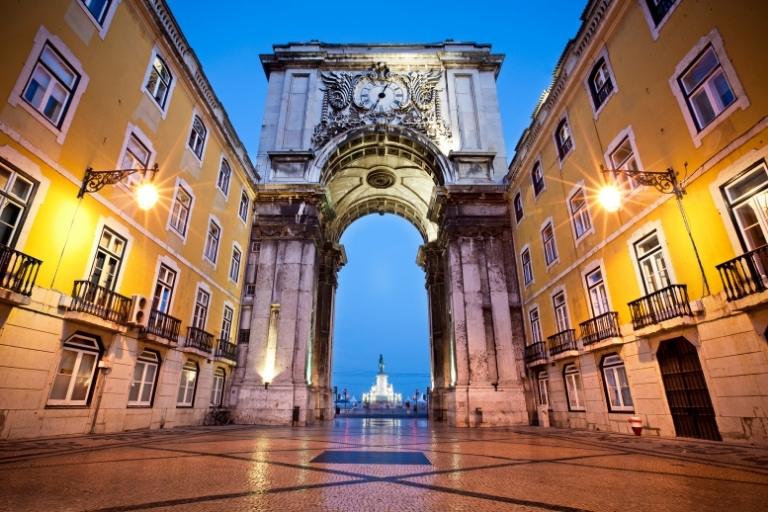
Lisbon is very walkable, but be prepared for its steep hills and cobbled sidewalks. I definitely recommend comfortable shoes with good grips. On foot, You can easily explore Lisbon’s best spots, including Alfama, Baixa and Bairro Alto.
If walking up hills sounds daunting, tuk-tuks are a fun and convenient way to explore Lisbon’s historic neighbourhoods. Many offer guided tours, providing fascinating insights as you ride through the city. You’ll also find ride-sharing services like Uber, Bolt and FreeNow, which are widely available and cheaper than traditional taxis, making them a good alternative for long distances.
Where to stay during your Lisbon city break
- Baixa and Chiado: Located in the heart of Lisbon, these neighbourhoods are ideal for first-time visitors who want to stay close to Praça do Comércio, Rua Augusta and Rossio Square. Lisbon’s main attractions are within walking distance, with easy access to the metro and trams. This area has a mix of boutique hotels, stylish apartments and traditional guesthouses, making it a perfect base for sightseeing and shopping.
- Bairro Alto: Bairro Alto is the best place to stay if you enjoy live music, bars and a lively atmosphere. At night, the area transforms into a bustling nightlife hub, but keep in mind that it can get noisy. Many streets in this area are pedestrian-only, so public transportation connections are slightly less convenient than in Baixa. However, you’ll be right next to some of the city’s best restaurants and bars.
- Alfama: For a more authentic stay, Alfama is a fantastic choice. With its narrow streets, fado houses and historic charm, it’s perfect for those who love culture and don’t mind a bit of uphill walking. However, because of its steep alleys and limited road access, taxis and ride-sharing options may drop you off at the nearest main road rather than at your hotel’s doorstep.
- Avenida da Liberdade: Lisbon’s answer to Champs-Élysées, this wide, tree-lined boulevard is home to luxury hotels, designer boutiques and elegant cafés. It’s a quieter area that’s still centrally located. The Marquês de Pombal metro station is nearby, making it easy to access the rest of the city, and many high-end hotels here offer stunning city views.
Money and payments
Portugal uses the Euro (€), and most businesses accept credit and debit cards, especially in tourist areas. Contactless payments like Apple Pay and Google Pay are also widely used. However, carrying some cash is always a good idea, especially in smaller cafés, bakeries and markets where card payments may not be accepted.
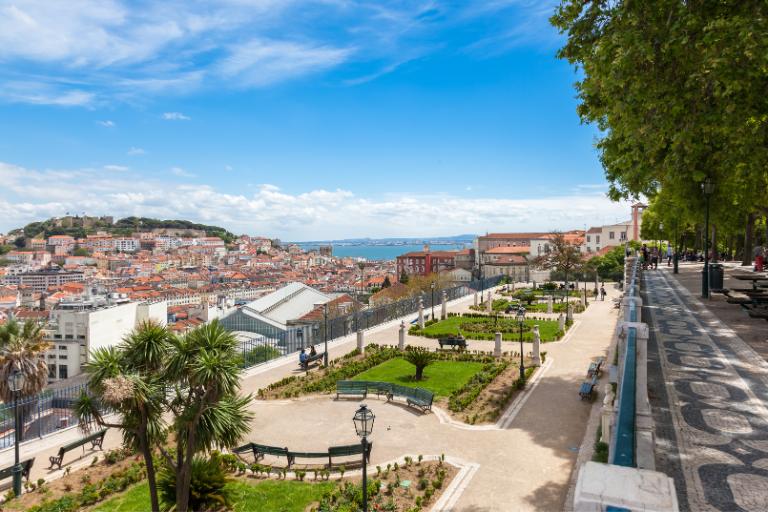
Tipping is not mandatory in Portugal, but it’s appreciated. In restaurants, rounding up the bill or leaving 5-10% is common if the service is good. In taxis, it’s usual to round up to the nearest Euro.
Best time to visit Lisbon
Spring (March-May) and fall (September-November) offer pleasant temperatures (15–25°C / 59–77°F) and fewer tourists, making it the best time for sightseeing and outdoor activities. Flights and accommodation are generally cheaper than during peak summer, and you won’t have to deal with long queues at attractions.

During summer (June-August), Lisbon can get very hot, often exceeding 30°C (86°F). While it’s a great time for beach day trips, the city’s steep hills and heat can be tiring. Expect peak season crowds at major sites like Belém Tower and Jerónimos Monastery, so booking skip-the-line tickets is a good idea.

Winters in Lisbon (December-February) are mild compared to the rest of Europe, with temperatures averaging 10-15°C (50-59°F). It’s a great time to enjoy the city with fewer tourists, but some smaller attractions may have shorter opening hours. December is particularly festive, with Christmas markets and holiday lights, making it a cozy and charming time to visit.
Final thoughts on a Lisbon city break
I had a great time in Lisbon, and it was my first introduction to Portugal. Unlike its popular neighbour Spain, I don’t think Portugal gets as many visitors, which means it’s not as overrun with crowds. If you love cultural travel and want to explore a country that offers loads of history, cool architecture, interesting museums and fortresses, then you should definitely head to Portugal.
Spending 3 days in Lisbon will give you enough time to savour the city’s best attractions. After you indulge in delicious food and soak up the cultural fabric that makes Lisbon such an incredible city, you can set to explore the rest of Portugal. I can guarantee that you’ll leave wanting to come back for more.

